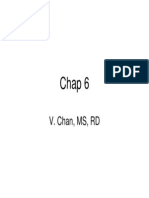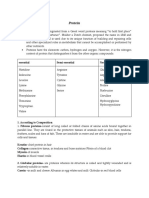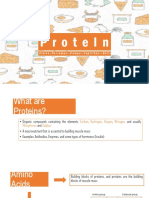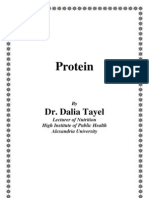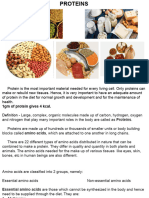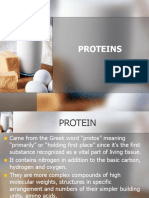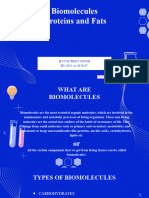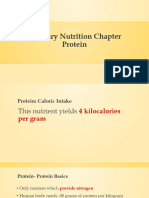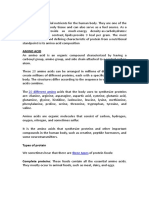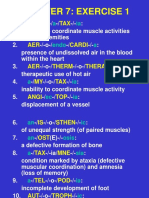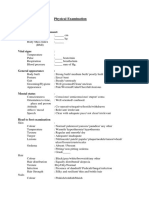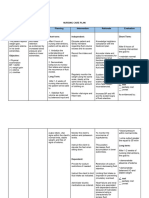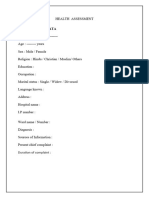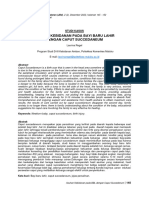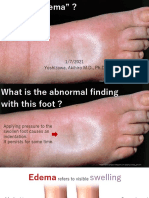0% found this document useful (0 votes)
164 views5 pagesSas 4
This document provides information about proteins in a nursing lecture on nutrition and diet therapy. It discusses the chemical structure of proteins, the roles of proteins in the body including as enzymes and structural components, and the health effects of protein deficiency and excess such as malnutrition. It also describes high and low quality proteins and notable food sources of each.
Uploaded by
shaneCopyright
© © All Rights Reserved
We take content rights seriously. If you suspect this is your content, claim it here.
Available Formats
Download as PDF, TXT or read online on Scribd
0% found this document useful (0 votes)
164 views5 pagesSas 4
This document provides information about proteins in a nursing lecture on nutrition and diet therapy. It discusses the chemical structure of proteins, the roles of proteins in the body including as enzymes and structural components, and the health effects of protein deficiency and excess such as malnutrition. It also describes high and low quality proteins and notable food sources of each.
Uploaded by
shaneCopyright
© © All Rights Reserved
We take content rights seriously. If you suspect this is your content, claim it here.
Available Formats
Download as PDF, TXT or read online on Scribd
/ 5











